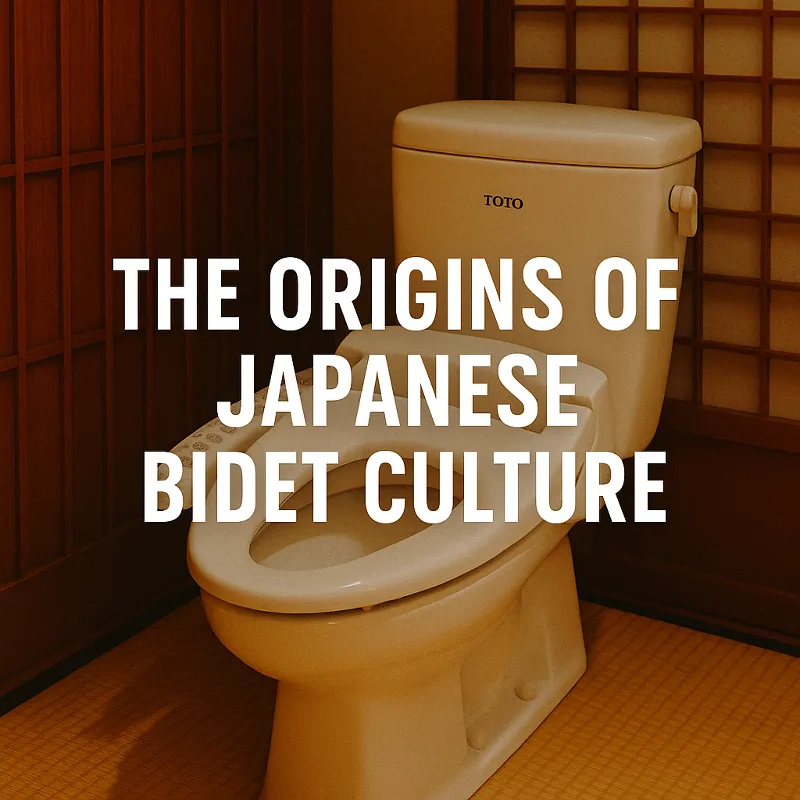
The Origins of Japanese Bidet Culture
The emergence of the Japanese bidet culture can be traced back to the early 20th century. While the concept of bidets originated in France in the 17th century, it was not until the 1960s that Japan began to adopt and adapt this technology into their culture. Initially, the Japanese bidets served a purely functional purpose, designed to enhance personal hygiene. However, over time, these devices evolved to incorporate advanced features, making them a symbol of the nation’s technological prowess and commitment to cleanliness.
In Japan, the term “bidet” often refers to what is known as a “washlet” – a sophisticated toilet seat featuring a built-in bidet system. The first electric bidet toilet seat, also known as the “washlet,” was introduced by the Japanese company TOTO in 1980. This innovation marked a significant milestone in the evolution of bathroom technology, transforming the humble bidet into a high-tech marvel equipped with various features such as heated seats, deodorizers, and adjustable water pressure and temperature settings.
Checklist for Purchasing Eco-Friendly Bidets 👆Technological Advancements
Key Features of Modern Bidets
Modern Japanese bidets are a testament to the country’s emphasis on technological innovation. Most units are equipped with a plethora of features designed to enhance user comfort and hygiene. For instance, many bidets offer customizable water pressure and temperature settings, allowing users to tailor their experience to their personal preferences. Additionally, features such as air dryers reduce the need for toilet paper, making these devices not only convenient but also environmentally friendly.
Another noteworthy feature is the self-cleaning nozzle, which ensures the bidet remains sanitary after each use. Some models also come with a deodorizing function, which neutralizes unpleasant odors, enhancing the overall bathroom experience. Furthermore, innovative models include sensors that detect when a user is approaching, automatically lifting the toilet seat and heating it to a comfortable temperature.
Impact of Bidet Use on Preventing Deforestation 👆Impact on Japanese Society
The integration of bidets into Japanese households has had profound effects on society. The emphasis on hygiene is closely linked to social norms regarding cleanliness and respect. In Japan, maintaining a clean and sanitary environment is a reflection of respect for oneself and others. As such, the bidet has become an essential fixture in many Japanese homes, hotels, and public restrooms, reinforcing these cultural values.
Moreover, the widespread use of bidets aligns with Japan’s commitment to sustainability. By reducing the reliance on toilet paper, bidets contribute to environmental conservation efforts. This aligns with the global push towards more sustainable living practices, making Japanese bidets a model for other nations looking to reduce waste and promote eco-friendly alternatives.
The Relationship Between Reducing Plastic Packaging and Bidet Adoption 👆Global Influence and Adoption
Spread of Japanese Bidet Technology
The influence of Japanese bidet technology has extended far beyond its borders. As global awareness of personal hygiene and environmental sustainability grows, many countries have begun to adopt Japanese-style bidets. The bidet market has seen a significant expansion in North America, Europe, and parts of Asia, driven by the increasing demand for advanced bathroom solutions.
Major Japanese manufacturers such as TOTO and Panasonic have played a pivotal role in exporting bidet technology worldwide. These companies have successfully adapted their products to cater to the preferences and needs of international consumers. For instance, in regions where space is a premium, compact and easy-to-install models have been developed. Similarly, in areas with lower energy consumption standards, energy-efficient models are available.
How Bidets Can Contribute to Carbon Emission Reduction 👆Challenges and Misconceptions
Despite their benefits, bidets have faced certain challenges and misconceptions, particularly in Western countries where they are less common. One common misconception is that bidets are difficult to use or install. However, modern bidets are designed with user-friendliness in mind, featuring intuitive controls and straightforward installation processes.
Another challenge is the perception of bidets as a luxury item rather than a necessity. This has been gradually changing as awareness about hygiene and sustainability increases. Educating consumers about the long-term cost savings associated with reduced toilet paper usage and the environmental benefits of bidets is crucial to overcoming these misconceptions.
Energy Comparison: Toilet Paper Production vs. Bidet Water Usage 👆Future of Bidet Culture
The future of bidet culture in Japan and globally is promising. As technology continues to evolve, we can expect to see even more innovative features integrated into bidet systems. The rise of smart home technology presents opportunities for bidets to become more interconnected, offering features such as voice control and integration with other smart devices.
Furthermore, as the global community becomes increasingly aware of the importance of hygiene, the adoption of bidets is likely to grow. This trend is supported by health experts who advocate for the use of bidets as a more sanitary alternative to toilet paper. As such, bidets are poised to become a standard fixture in bathrooms worldwide, contributing to a cleaner and more sustainable future.
Related Post: The Relationship Between Reducing Plastic Packaging and Bidet Adoption
How Smart Home Integrated Bidets Transform Elderly Living 👆